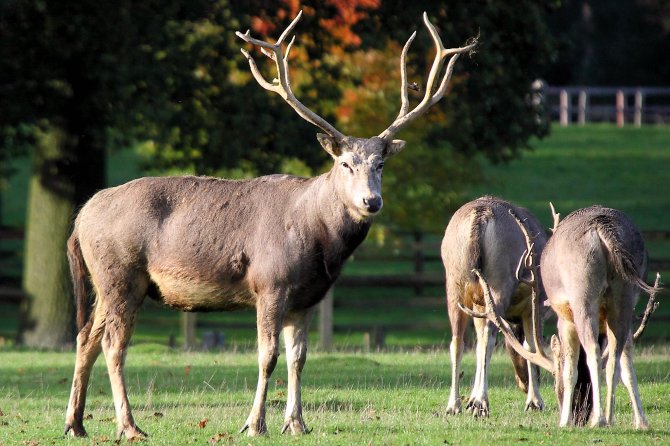
News
Reversing extinction through re-wilding: the case of China’s Père David’s Deer
Thirty-five years ago, a rare species of deer, extinct in the wild since the early twentieth century, was reintroduced in China. Today the deer population is expanding, according to a recent letter published in Science. Yet further international cooperation is needed for the species to thrive, as noted by the authors, including Annah Zhu of Wageningen University.
A coincidental “discovery”
Père David's deer (Elaphurus davidianus; mílù in Mandarin) is endemic to China and became extinct in the wild by the late Qing Dynasty (1644-1912). Overhunted for centuries, the species was by the 1860s restricted to the Emperor’s imperial hunting grounds in Beijing. French missionary Father (Père) David, after whom the deer is named, happened to “discover” the species during his missionary work in Beijing. Coincidentally walking by the walled off hunting grounds, so the story goes, Father David asked the guards to allow him a peek inside. With reluctance, the guards permitted him a single glance, at which time a herd of these majestic deer happened to be trotting by. In this magical moment, a deer known and used for millennia was “discovered” by Western science, and specimens were eventually sent overseas to Europe at the behest of Father David.
This chance encounter proved to be fortuitous. By 1900, in the heat of the Boxer Rebellion, the last remaining deer were pillaged and killed by European troops occupying the imperial hunting grounds. And that was the end of the Père David’s Deer in China – until another fortuitous turn of events in 1985.
Returning home
Throughout the 20th Century, four generations of England’s Dukes of Bedford happened to take up the exotic hobby of collecting Père David’s Deer to breed in their spacious estates. Gradually, they acquired individuals from zoos and private estates across Europe. Starting in 1985, the 14th Duke of Bedford began to donate a number of these deer back to Beijing for re-wilding. Initially, 38 deer were donated back to the same Qing Dynasty imperial hunting grounds in which the last herds roamed, now renamed Beijing Milu Park (mílù being the name for the deer in Mandarin).

Image by Tim Felce (Airwolfhound) - Pere David Deer - Woburn Deer Park, CC BY-SA 2.0, https://commons.wikimedia.org/w/index.php?curid=27814678
Following their successful establishment at Beijing Milu Park, the park sent individuals to other parts of China. Dafeng nature reserve in Jiangsu Province, north of Shanghai, was the second pillar of the deer’s reintroduction. After the initial reintroduction of an additional 39 deer in 1986, Dafeng’s population has now reached 5,016 individuals – a 129-fold increase. Both Jiangsu Dafeng and Beijing Milu Park have sent more than 710 deer to 79 locations throughout China over the past 35 years, while expanding their own populations. The locations of the deer in China now cover all previous habitats before its extinction.
Future prospects
The main threat to the expansion of Père David’s Deer populations at this time is a lack of genetic diversity. Low genetic variation has resulted in high miscarriage rates, reduced lifespan, and increased susceptibility to diseases. A lack of grazing habitat has also kept population numbers relatively low, hindering stability. Addressing these concerns through a master plan for Père David’s deer conservation at the national level could go a long way toward overcoming inbreeding and other environmental obstacles. Beyond this, international cooperation, in terms of shared databases and a germplasm databank between China and other countries with ex-situ populations, is another promising route forward for the ongoing conservation of this once extinct deer.